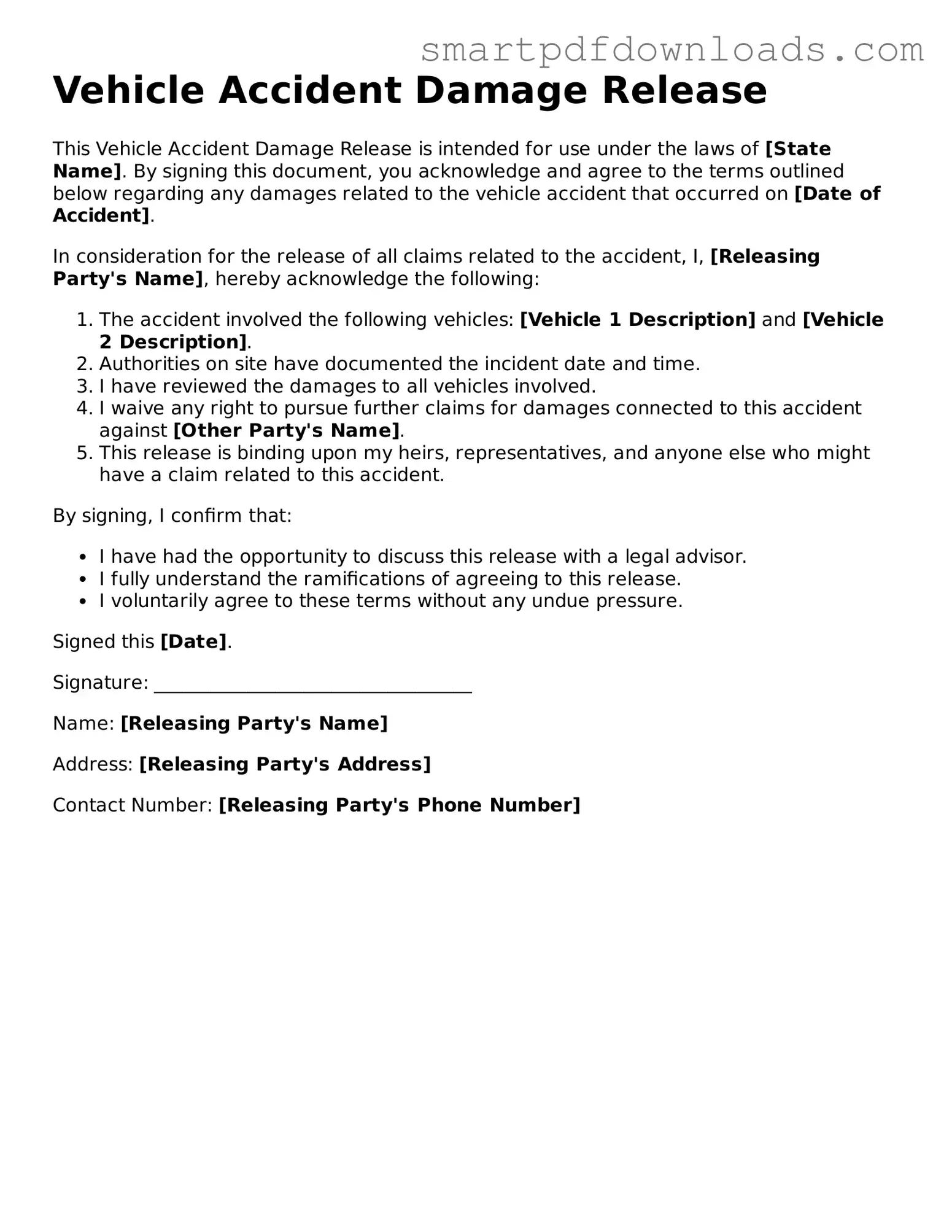Vehicle Accident Damage Release
This Vehicle Accident Damage Release is intended for use under the laws of [State Name]. By signing this document, you acknowledge and agree to the terms outlined below regarding any damages related to the vehicle accident that occurred on [Date of Accident].
In consideration for the release of all claims related to the accident, I, [Releasing Party's Name], hereby acknowledge the following:
- The accident involved the following vehicles: [Vehicle 1 Description] and [Vehicle 2 Description].
- Authorities on site have documented the incident date and time.
- I have reviewed the damages to all vehicles involved.
- I waive any right to pursue further claims for damages connected to this accident against [Other Party's Name].
- This release is binding upon my heirs, representatives, and anyone else who might have a claim related to this accident.
By signing, I confirm that:
- I have had the opportunity to discuss this release with a legal advisor.
- I fully understand the ramifications of agreeing to this release.
- I voluntarily agree to these terms without any undue pressure.
Signed this [Date].
Signature: __________________________________
Name: [Releasing Party's Name]
Address: [Releasing Party's Address]
Contact Number: [Releasing Party's Phone Number]
